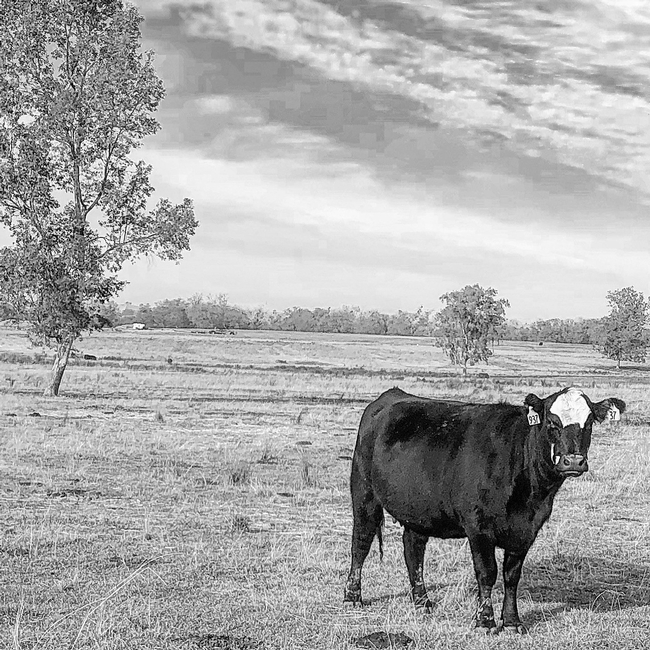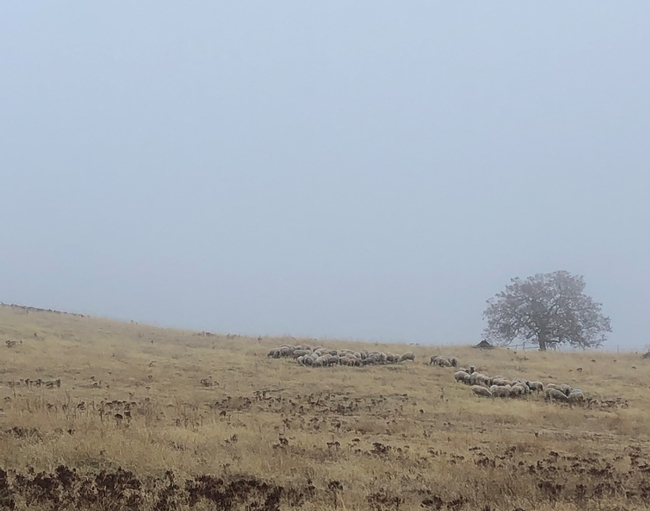Here in Auburn (on December 17, 2020), we received 0.64" of rain overnight. After a late start to the rainy season (and to germination on our annual rangelands), any rain is welcome at this point. But last night's rain continues an interesting (and potentially troubling) trend - our storm total was about 60 percent of what forecasters predicted earlier in the week. Similarly, last weekend's storms delivered less moisture than predicted. Our seasonal total (since October 1) is just over 4 inches; our average seasonal total here in Auburn over the last 20 years is over 11.5 inches - in other words, we've received just 36 percent of our "normal" precipitation so far.
On the positive side of all of these numbers, we have received enough rain to keep the grass that germinated last month going for a month or more. For our small sheep operation, we'd established a key date of December 31 for implementing more drastic drought measures (like buying more hay or selling sheep). With 1.89 inches of rain this month, and with the forage we've saved due to our conservative stocking rate and diligent grazing planning, we should make it through lambing without much added expense.
But the pattern remains concerning. I've noticed over the last several years that precipitation forecasting has become more accurate. While the exact timing of storms remains difficult to predict with down-to-the-minute accuracy, forecasters have become more adept at predicting storm totals several days out. That this year's storms seem to be falling short of predictions suggests that forecasting remains an inexact science.
Obviously, rainfall on our annual rangelands does more than grow forage. Many operations rely on run-off to recharge seasonal creeks and refill stock ponds. Without stock water, some producers won't be able to use the forage they saved from last spring (or they'll need to haul water). In the medium-term, the lack of snowfall in the high country portends a challenging summer for those of us who rely on irrigated pasture. Fortunately, our local water districts entered the winter with adequate carry-over in their reservoirs, but a lower-than-average snow pack is definitely concerning!
So while while our operation has made it through the first critical date of our drought plans, we're not out of the woods yet. After lambing is over in late March, our next major decision point will be weaning. We usually wean the lambs in mid/late June - sometimes as late as early July. In order to save forage on our annual rangeland for next fall, we may wean and sell our lambs early, allowing us to graze dry ewes on irrigated pasture into midsummer (which reduces our forage demand). I suspect our next decision date will be sometime in mid/late April.
I won't reiterate how difficult 2020 has been on a variety of fronts - drought just seems like one more crisis on top of a crisis-dominated year. I would encourage you to check out the Rangeland Drought Information Hub on the UC Rangelands website, however. You'll find a variety of resources for responding to drought conditions. From my perspective, the best time to start planning for drought is while it's raining. The second best time to start planning for drought is now! If you'd like help developing a drought plan or considering specific decisions, contact me at dmacon@ucanr.edu.

